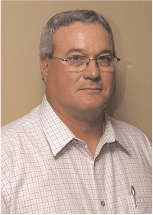Improvements in development strategy for the Stag Oil Field, North West Shelf, Australia—implications for production success and drilling risk minimisation
P. Anderson A , P. Bingaman A , S. Betts B , K. Graves A , F. Fernandes A and F. O’Sullivan AA Apache Energy.
B Coastal Energy.
The APPEA Journal 52(2) 657-657 https://doi.org/10.1071/AJ11071
Published: 2012
Abstract
Located on the North West Shelf of Western Australia, the Stag Oil field has proven to be a prolific reservoir, having produced more than 55 million barrels (MMbbls) of oil since 1998. This has not been without its challenges, however; with premature water breakthrough from injection wells occurring in several wells, potentially stranding large volumes of oil in the ground. Using the multicomponent processing and joint amplitude-versus-offset (AVO) inversion of an ocean bottom cable (OBC) seismic survey acquired in late 2007, new light has been shed on the distribution of unswept oil.
This data has led to the successful drilling of six wells and a marked increase in field production. Additionally, the seismic data has also been used to minimise drilling risks by using seismic coherency to steer the well around potential problems with a significant impact on well costs due to reduction of wellbore problems associated with horizontal drilling in the Muderong shale.
To date, four wells have been drilled using this technique, resulting in a significant decrease in non-productive time while drilling during the most recent drilling campaign, which has a significant impact upon the profitability of these late-stage development wells.

Paul Anderson is a senior staff geophysicists at Apache Energy where he specialises in seismic rock properties. Before moving to Australia, he worked for Apache Canada where he was responsible for process and quantitative interpretation of conventional and multi-component seismic data, as well as microseismic and other technologies. His previous experience includes eight years in unconventional fields, such as heavy oil and shale gas plays in Canada. Before Apache, he worked on projects from across the world at Veritas DGC Ltd., Hydro-Fax Resources, and IGC International Geoscience Consulting. He completed a bachelor’s degree (geophysics) in 1998 and a master’s degree (seismic inversion) in 2010, both at the University of Calgary. Member: ASEG, SEG, CSEG, EAGE, PESA. |

Paul Bingaman graduated with a BSc (geology) from Texas A&I University in 1977 and an MSc (geology) from Idaho State University in 1980. He has held various geological positions at Exxon Company USA, Southland Royalty Company, Ranken Energy Corporation, Bridge Oil Ltd, Parker & Parsley Australasia Ltd, and Apache Energy Ltd. He is now a consultant. Member: AAPG, SPE, PESA. |

Sam Betts studied petroleum engineering at UNSW as well as commerce at UNSW and UQ. He has held various engineering positions at Upstream Petroleum and Apache Energy in Australia. Presently, he is a senior reservoir engineer at Coastal Energy in Thailand. |

Kyle Graves is a drilling advisor at Apache in Australia. He has 28 years of industry experience in all sectors, technical and managerial, and has worked in several areas globally. He has worked at SPE, having served at the section, region, and global levels within the organisation. He has several publications to his credit. He is a 1984 petroleum engineering graduate of Texas A&M. Member: SPE. |

Fred Fernandes is an operations geologist at Apache Energy. Prior to working with Apache, he worked as a consultant wellsite geologist supervising onshore and offshore well in Australia and offshore wells in Egypt and Vietnam. He has a master’s degree (geology) from the University of Bombay (now Mumbai) India. |

Fiona O’Sullivan is a senior staff geologist at Apache Energy, working in Operations since 2005. Her previous experience includes two years as a contract geologist, also at Apache Energy. She completed a bachelor’s degree (geology and soil science) in 2003 at UWA. Prior to starting a career in the resource industry, she worked as a nurse/midwife for 20 years in neonatal intensive care. Member: AAPG, PESA. |
References
Anderson, P.F., Bingaman, P., Graves, K., Fernandes, F., O’Sullivan, F., and Betts, S. (2012). Recent production and drilling success of the Stag Oil Field from multidisciplinary evaluation of OBC seismic data. The Leading Edge 31, 387–91.Goodacre, J., Ion, A.M., Alexander, I.R., and Aitken, K.J., 2000—Stag development—challenges and successes in the first two years. SPE Asia Pacific Oil and Gas Conference and Exhibition, Brisbane, Australia, 16–18 October.
Hampson, D.P., Russell, B.H., and Bankhead, B., 2005—Simultaneous inversion of pre-stack seismic data. 75th SEG Annual International Meeting, Houston, USA, 6–11 November, Expanded Abstracts, 1633–37.
McDiarmid, A., Alexander, I., Ion, A., and Thompson, J., 2001—Experience of a reservoir waterflood failure and remediation treatment in the Stag reservoir. SPE Annual Technical Conference and Exhibition, New Orleans, USA, 30 September–3 October, SPE paper 72117.
Wibawa, S., Kvernstuen, S., Chechin, A., Graham, J., and Dowling, K.R., 2008—ICD screen technology in Stag Field to control sand and increase recovery by avoiding wormhole effect. International Petroleum Technology Conference, Kuala Lumpur, Malaysia, 3–5 December, #12385.


